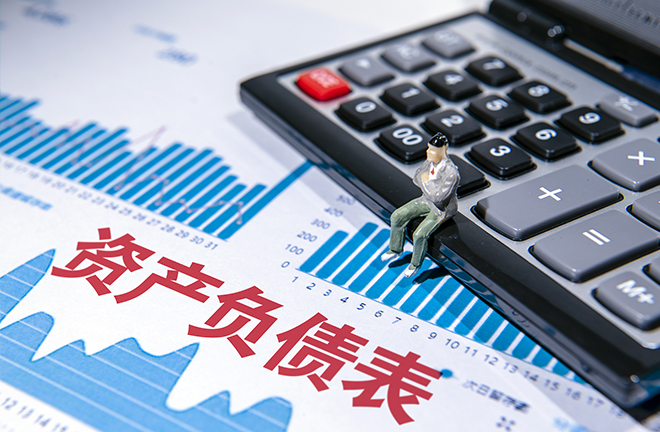Is the balance sheet a viable macroeconomic analysis tool?

The balance sheet analysis method plays an auxiliary role for macroeconomic analysis methods. Photo: CFP
The balance sheet is an accounting statement that reflects the assets, liabilities, and owner’s equity of a company at the end of the accounting period, reflecting the static operating activities of a company. So, can the balance sheet be considered a viable method for macroeconomic analysis?
Auxiliary method
The balance sheet analysis method itself presents several shortcomings. Firstly, it is considered a micro analysis method. When applied as a macroeconomic analysis method, discrepancies may arise between individual quantities and total quantities, as well as partial and overall characteristics. Each enterprise has its own balance sheet, and the balance sheets of different enterprises may vary greatly. If the balance sheets of all enterprises are derived from the balance sheets of selected enterprises, it can lead to the fallacy of composition. Secondly, the balance sheet analysis method is primarily a stock analysis method, capturing the assets and liabilities at a specific point in time. If it is used to analyze macroeconomic flows, caution must be taken to avoid logical errors. Thirdly, the balance sheet analysis method lacks the support of a comprehensive accounting system.
Of course, the balance sheet analysis method has its innovative significance. Macroeconomic analysis needs to be based on microeconomic analysis, and the balance sheet analysis method can be combined with various other microeconomic analysis methods to understand certain macroeconomic phenomena from the economic behavior of micro entities. Therefore, the balance sheet analysis method plays an auxiliary role for macroeconomic analysis methods.
Theoretical defects
At the same time, Dr. Richard C. Koo’s theory of “balance sheet recession” raises several logical concerns.
Koo fails to provide a clear definition of balance sheet repair in the process from asset depreciation to balance sheet repair.
During the transition from balance sheet repair to the reduction of corporate borrowing, certain companies involved in real estate speculation will need to undergo a “balance sheet repair.” This makes it challenging for them to repay maturing loans and acquire new ones, resulting in a decrease in total borrowing. While this situation does exist, it may not be the primary cause for the decline in corporate borrowing. In fact, when making investment decisions, enterprises must consider not only interest rates but also expected profit margins.
It remains unclear which concept holds more explanatory power: “maximizing profits” or “minimizing liabilities.” Koo places significant emphasis on the principle of “minimizing liabilities.” However, the concept of “minimizing liabilities” lacks clarity.
What is the cause of a recession: a contraction in total demand or a “liability minimization”? The so-called “balance sheet recession” is not the main reason for the economic recessions caused by the bursting of the economic bubbles.
Koo believes that the balance sheet is a blind spot in current macroeconomic analysis, as the latter is based on the assumption that each company’s balance sheet is healthy. Indeed, current macroeconomic analyses rarely focus on the impact of corporate behavior on the macro economy from the perspective of the balance sheet, which is the contribution of some economists, including Koo. However, Keynes primarily focuses on economic equilibrium that is below full employment. In light of this, it cannot be assumed that every company’s balance sheet is in a healthy state.
Chinese context
Koo’s analysis of China’s economic situation, in relation to Japan’s “balance sheet recession,” has sparked intense discussions across various sectors. However, it is important to note that the situation in China differs from that of Japan in several key aspects. Firstly, under strong government regulation, China’s real estate prices have remained relatively stable since 2017. At the same time, there is currently no significant bubble in China’s stock market as a whole. Secondly, the development, construction, and operation of real estate involve not only the real estate industry, but also various construction sectors. In addition to building houses, the construction industry also includes the construction of related infrastructure. In 1995, the added value of Japan’s construction and real estate industries accounted for 8.6% and 11.3% of its GDP, respectively, totaling 19.9%. In 2022, the added value of China’s construction and real estate industries accounted for 6.9% and 6.1% of GDP, respectively, totaling 13.0%. Even if the large-scale development of real estate enters a stable period, its impact on China’s macro economy is relatively limited. Thirdly, China’s per capita GDP in 2022 was $12,741, far lower than Japan’s per capita GDP of $25,900 in 1990. With the growth of China’s per capita GDP, residents’ income continues to increase, and their consumption capacity and demand will also significantly improve. There is still a great demand space for China’s economic development. Fourthly, under the socialist market economy system, the Chinese government has always played a key role with effective macroeconomic control policies.
Li Chong is a professor from the Business School at Beijing Normal University.
Edited by ZHAO YUAN

 PRINT
PRINT CLOSE
CLOSE